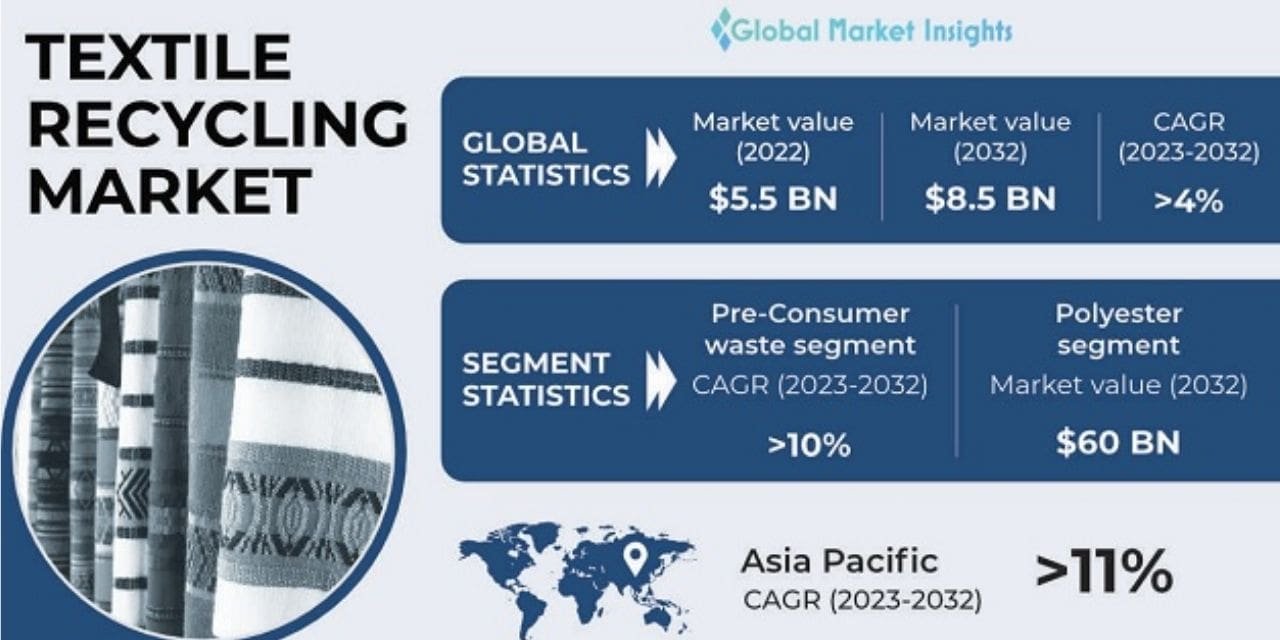The report “Textile Recycling Market by Material (Cotton, Polyester & Polyester Fibers, Wool, Nylon & Nylon Fibers), Textile Waste, Process, Distribution, End-use Industry (Apparel, Home Furnishing, Industrial & Institutional), and Region – Global Forecast to 2027″, The global textile recycling market size is projected to reach USD 9.4 billion by 2027 from USD 6.9 billion in 2022, at a CAGR of 6.4% during the forecast period. As the average life of a given garment gets shorter, there is an increase in the production of textile and clothing waste. Due to landfill disposal and the incineration process, which results in greenhouse gas emissions, this has a significant negative impact on the environment. According to EPA and SMART, recycling textiles significantly lowers greenhouse gas emissions, which stimulates economic growth. Furthermore, it is projected that innovations in recycling practises and ground-breaking research in the area will support market expansion.
Browse
• 235 Market data Tables
• 15 Figures
• 217 Pages and in-depth TOC on “Textile Recycling Market – Global Forecast to 2027″
Some of the prominent key players are:
- Lenzing AG (Austria),
- Birla Cellulose (India),
- HYOSUNG TNC (South Korea),
- Unifi, Inc. (US),
- Patagonia, Inc. (US) and many more….
Driver: High Emissions of Greenhouse Gases
Textile production and consumption have significant environmental, climate, and social impacts due to the consumption of resources (water, land, and chemicals), the emission of greenhouse gases, and pollutants. Various types of greenhouse gases are emitted during the production, manufacturing, and transportation of textile products. 8-10% of the world’s annual CO2 emissions come from the apparel industry. The apparel industry is considered one of the most polluting industries due to its huge amount of greenhouse gas emissions. The clothing industry released about 1.01 gigatons of carbon dioxide into the atmosphere in 2019. Unless drastic measures are taken, this is estimated to increase to 1.6 gigatons by 2030. At this pace, the fashion industry’s greenhouse gas emissions will surge by more than 50% by 2030.

